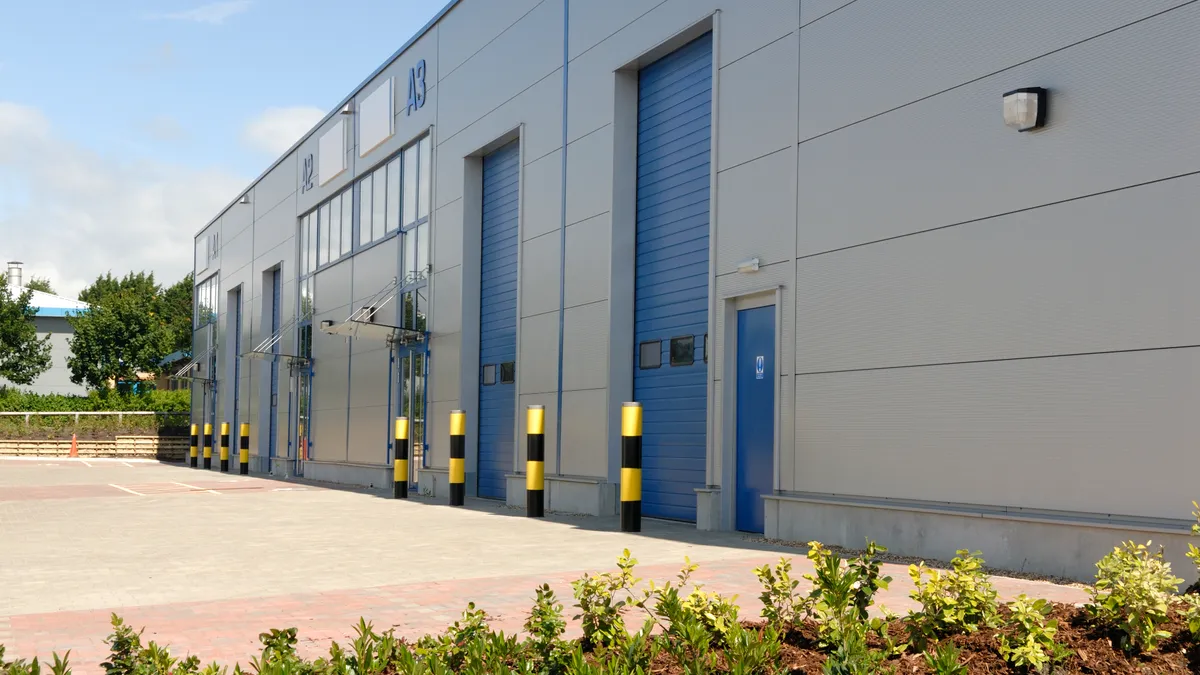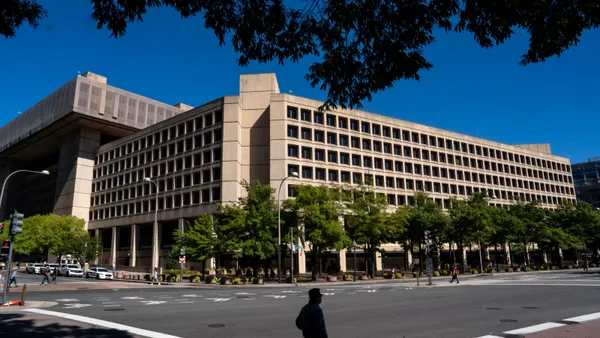Dive Brief:
- The industrial real estate market is set to see more activity in 2024, with leasing volume growing 14.8% from the fourth quarter of 2023 to 105.7 million square feet, according to JLL’s Q4 2023 Industrial Outlook.
- Although leasing volume was down 9% from the year-ago period, the outlook for 2024 is positive, with an expected surge in transaction volume from pent-up demand from occupiers who shelved new deals last year, its report says.
- The redevelopment of existing sites to replace aging industrial buildings with more efficient-spaces is also set to be a long-term driver of industrial real estate, driven by ESG initiatives, a global shift toward renewable energy and a continued need for electric vehicle infrastructure, the report says.
Dive Insight:
The days of historical leasing highs during the throws of the pandemic are long gone and “won’t be topped anytime soon,” JLL’s report states, noting that last year was “generally sluggish in nature.” High interest rates, inflation, reduced sales and leasing volumes chilled industrial renewals and new leases, with industrial transaction volumes decreasing by 54% in 2023..
But at the end of 2023, new leases accounted for 56.7% of leasing activity — which JLL says indicates sustained demand for industrial assets. The transactions market began to improve around the end of last October, leading to an increase in transactions being underwritten and launched, JLL says. The report notes that the improvement is likely to result in an increased number of bidders per transaction and that investor appetite for larger transactions — those $250 million and above — “has been increasing in recent weeks.”
Still, tenants are slow to sign on the dotted line, with C-suite executives continuing to scrutinize the terms of real estate deals more than before, Charlotte Elstob, managing director of JLL’s industrial occupier services, told Facilities Dive. It’s a shift that started during the pandemic and hasn’t disappeared, she said in an email.
“Occupiers with upcoming renewals in markets that have seen tremendous rental rate growth are weighing the options and costs associated with moving locations to a more cost-effective market,” Elstob said. The more complex the lease, the more time it takes, she noted.
JLL’s projections come amid a cautious sentiment driving a prolonged decision-making process for occupiers finalizing new lease agreements — a trend that drove a 4% drop in its fourth-quarter leasing revenue and a 12% leasing decline at Cushman & Wakefield, last quarter. Cushman & Wakefield CEO Michelle MacKay observed last November that some of the company’s tenants were “holding off on decision-making” on large leases. But, like JLL, Cushman & Wakefield said it expects “modest growth” in leasing this year.
With absorption numbers — the rate at which available space gets filled — having likely already hit their lowest lows, JLL anticipates that rental rate growth will continue at a moderate pace, but remain positive.The firm cites expectations of a near-term recovery as tenants occupy preleased properties.













